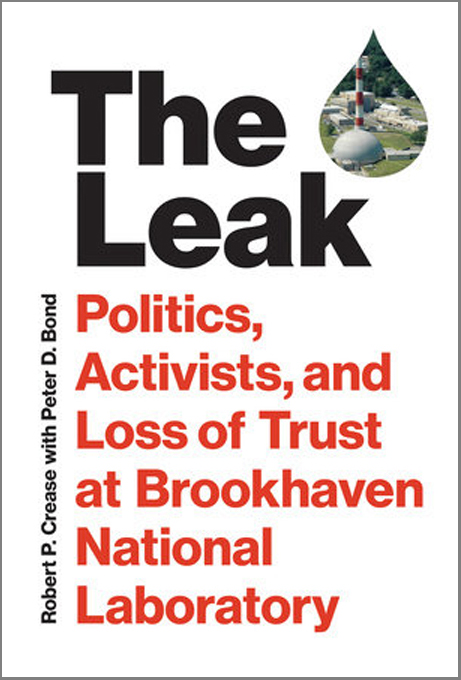 The basics: For more than 30 years, the High Flux Beam Reactor (HFBR), a research reactor at BNL, was used for neutron scattering experiments in topics from materials science and medical diagnoses to nuclear physics and isotope production, Crease explains.
The basics: For more than 30 years, the High Flux Beam Reactor (HFBR), a research reactor at BNL, was used for neutron scattering experiments in topics from materials science and medical diagnoses to nuclear physics and isotope production, Crease explains.
Early in 1997, a leak was discovered in HFBR’s spent fuel pool. That pool contained about 260 cubic meters of tritium-bearing water and was leaking about 30 or so liters a day, according to Crease, who emphasized that the leak did not impact drinking water sources and that federal, state, and local officials had all determined the leak posed no health hazard.
“Firestorm”: The story, of course, did not end there, and The Leak explores that what Crease describes as “a media and political firestorm” fueled by “antinuclear activists . . . using fake facts to attack the reactor and making over-the-top comparisons to Chernobyl.”
Brookhaven’s scientists “had little political clout and were generally ill prepared for public discussion; they wrote letters too long and technical for newspapers to publish and their explanations at public meetings were too careful and conscientious to counter all the impassioned and incendiary accusations.”
In the meantime, “a celebrity-driven, well-funded antinuclear group, whose members included the actor Alec Baldwin and the model Christie Brinkley, lobbied the then [Department of Energy] secretary Bill Richardson to close the reactor, spreading misinformation about it.” Richardson ultimately decided to terminate the reactor in November 1999.
A story with a purpose: Crease explains in his Physics World opinion piece why he and Bond chose to delve into the story of the untimely closure of a research reactor.
“The Leak aims to fulfil three functions of historical writing,” he says: “to provide an awareness of how we got to our present state,” “to expose the dynamics powering the story,” and to “provide motivation for preventing such a plot to unfold in the future. Surely what happened at Brookhaven is not how we want important decisions about our health, safety, and environment to be made?”



 The basics: For more than 30 years, the
The basics: For more than 30 years, the 




